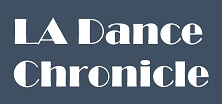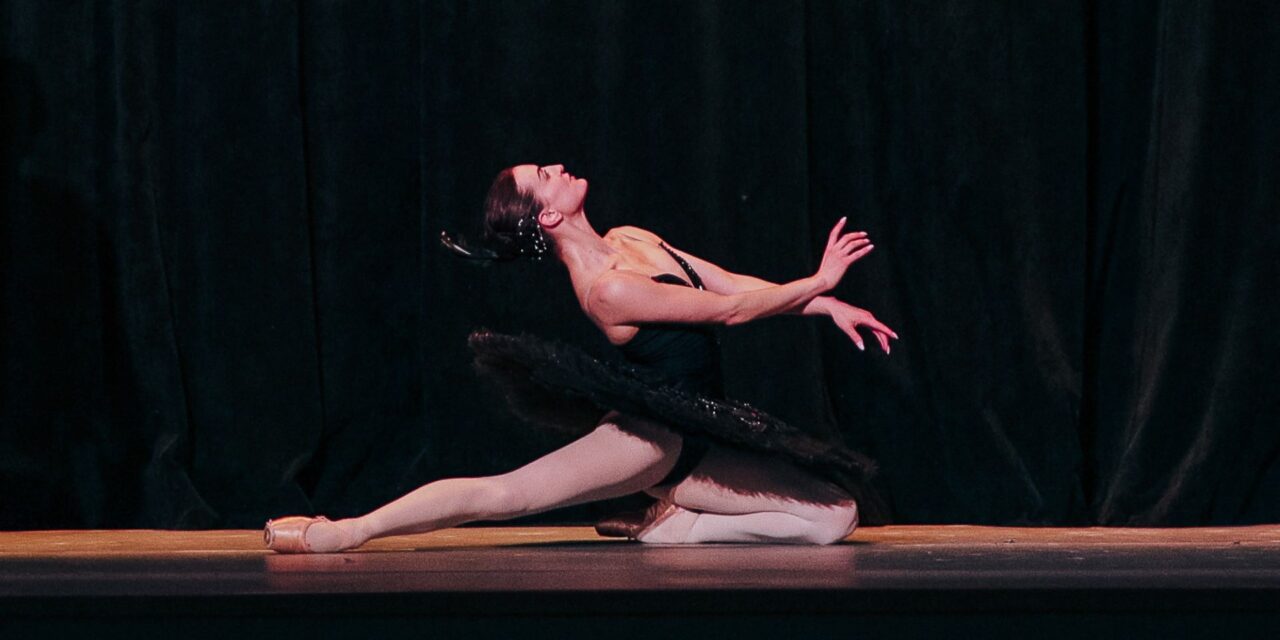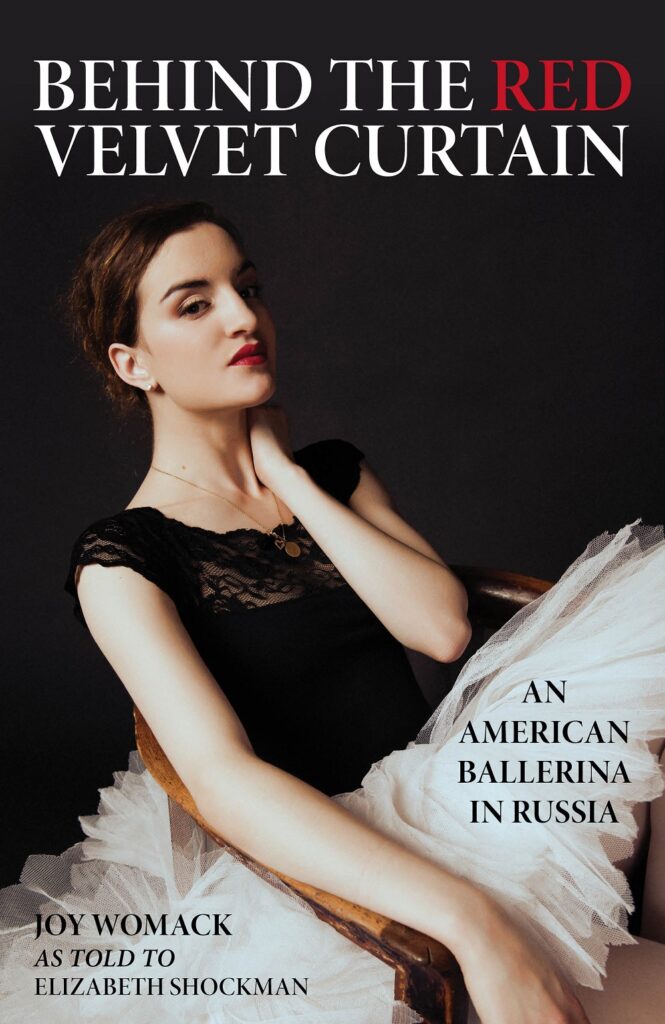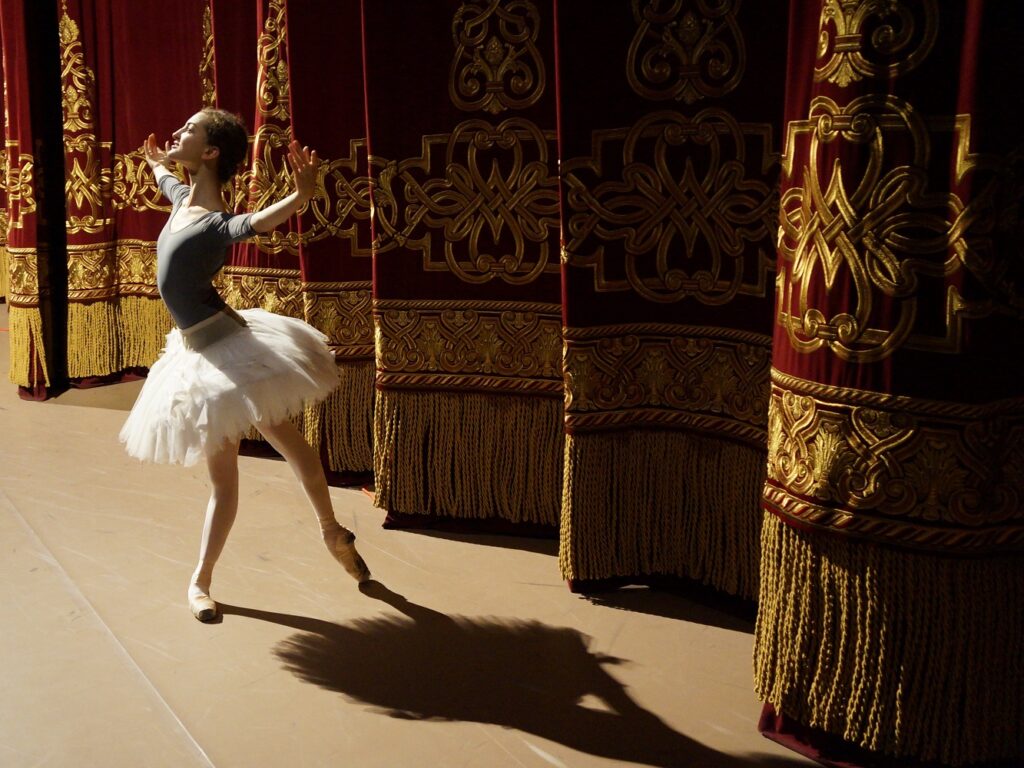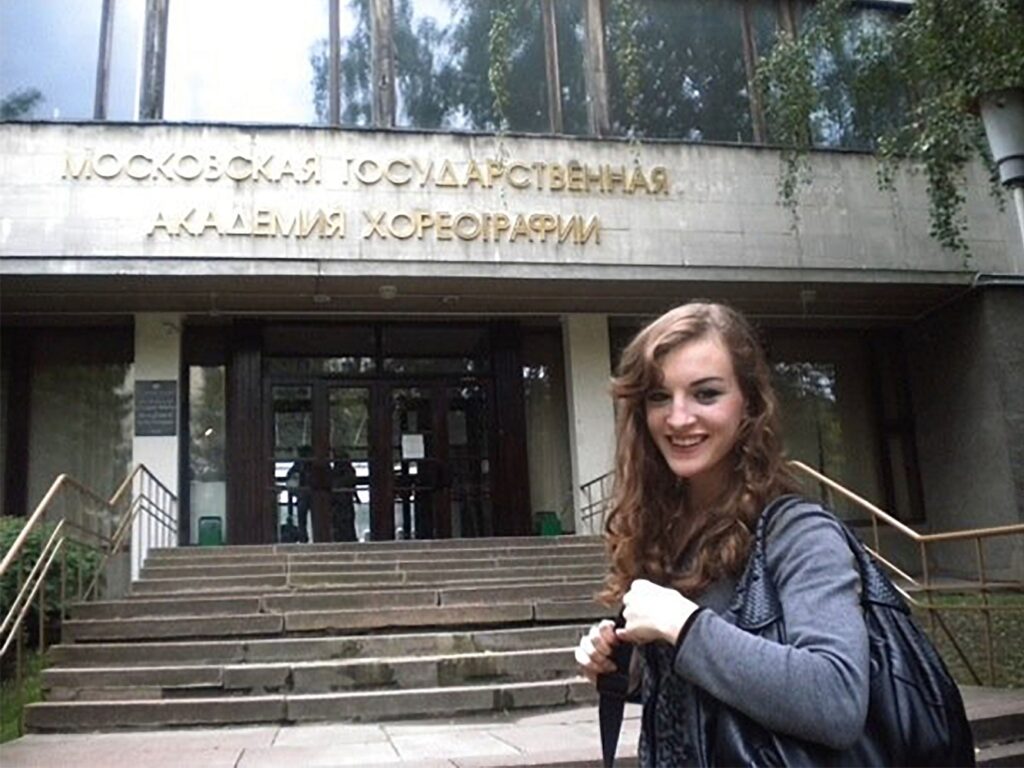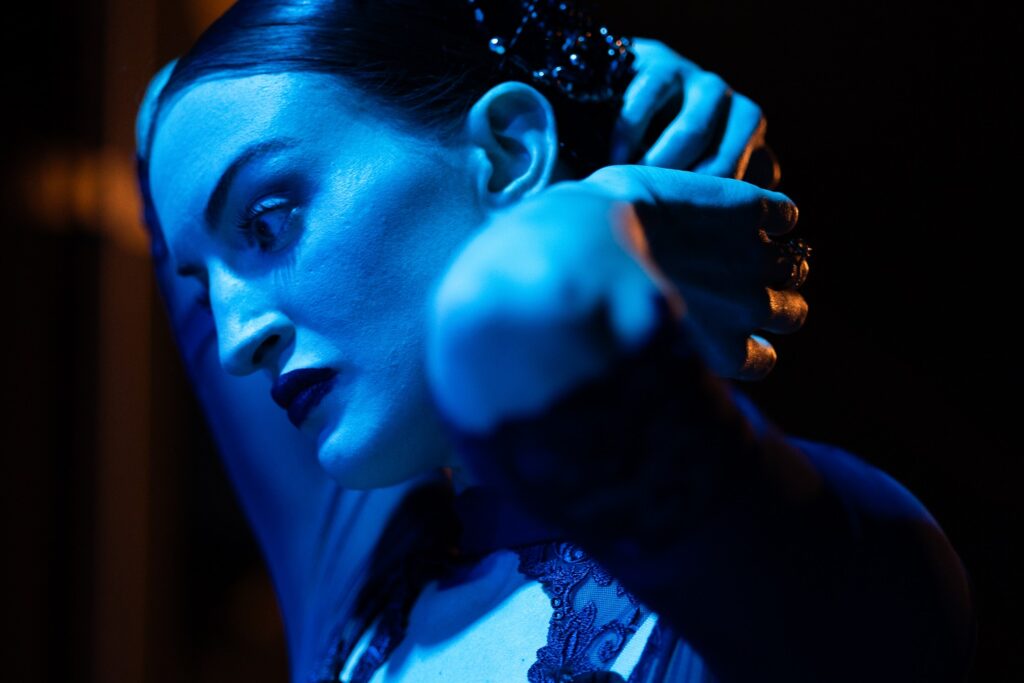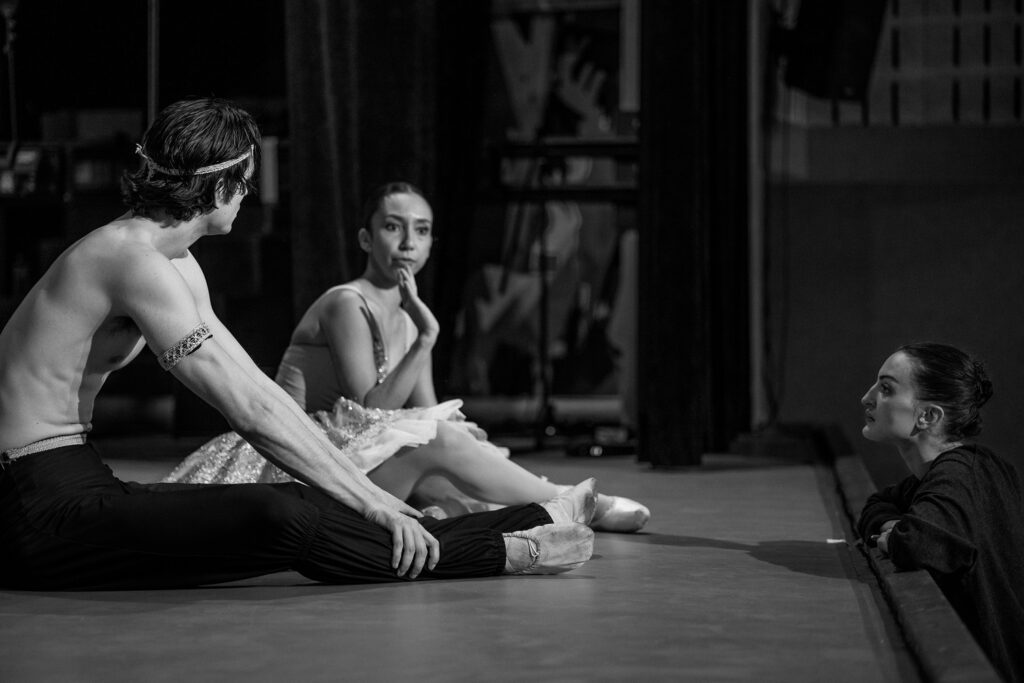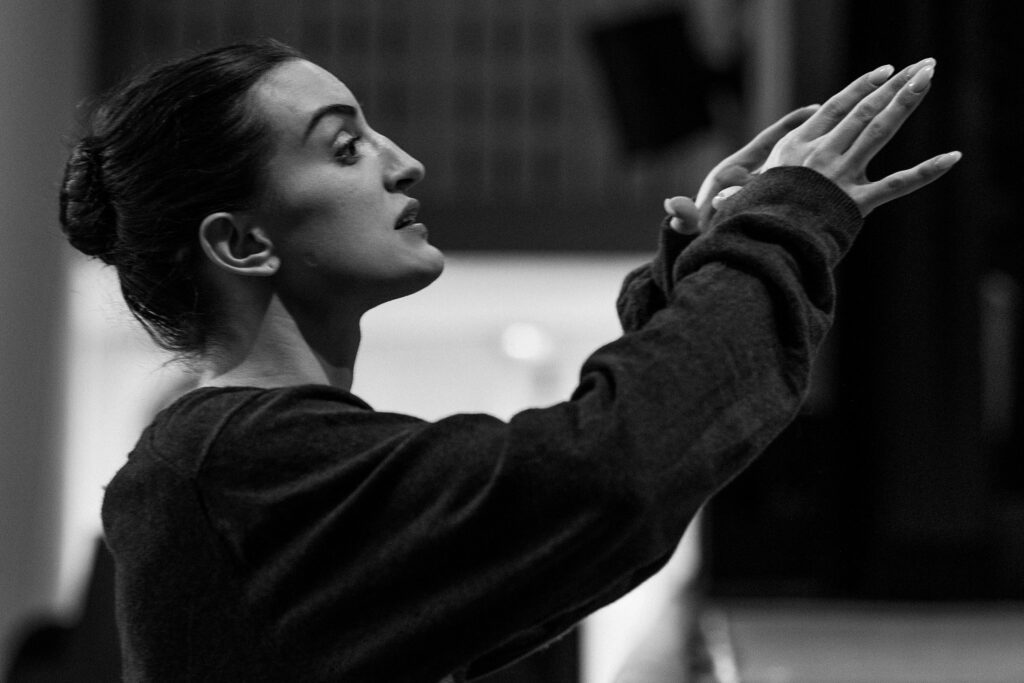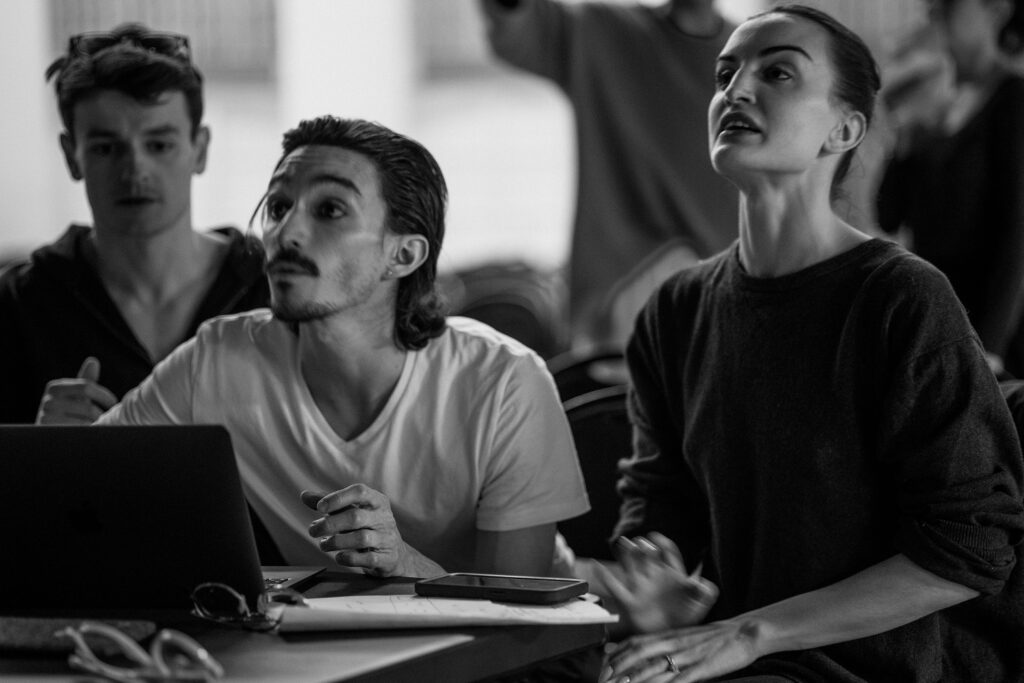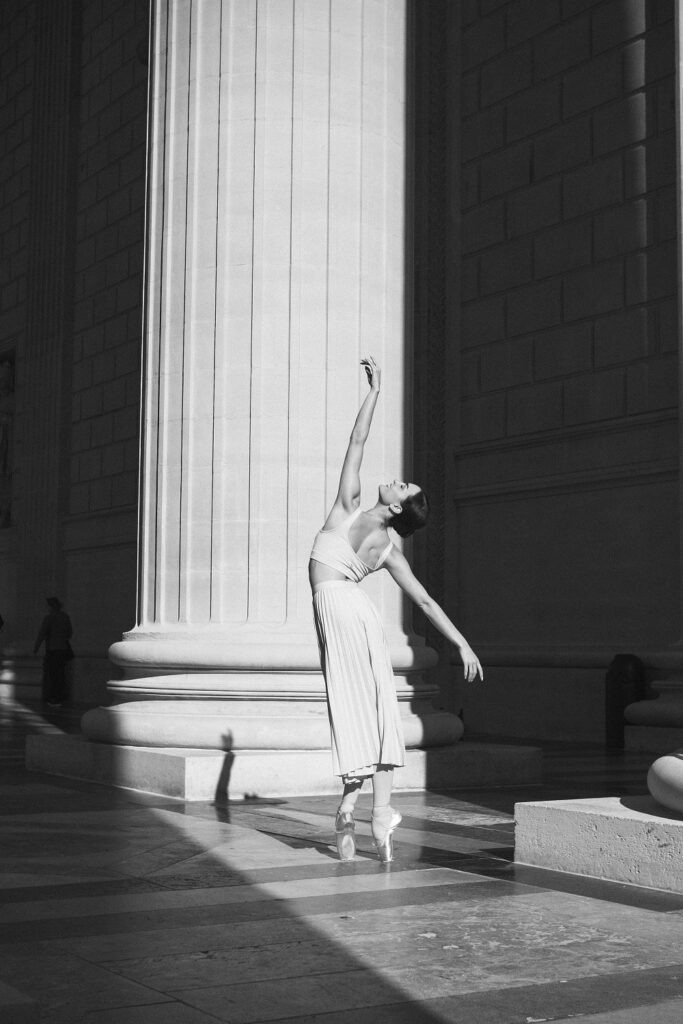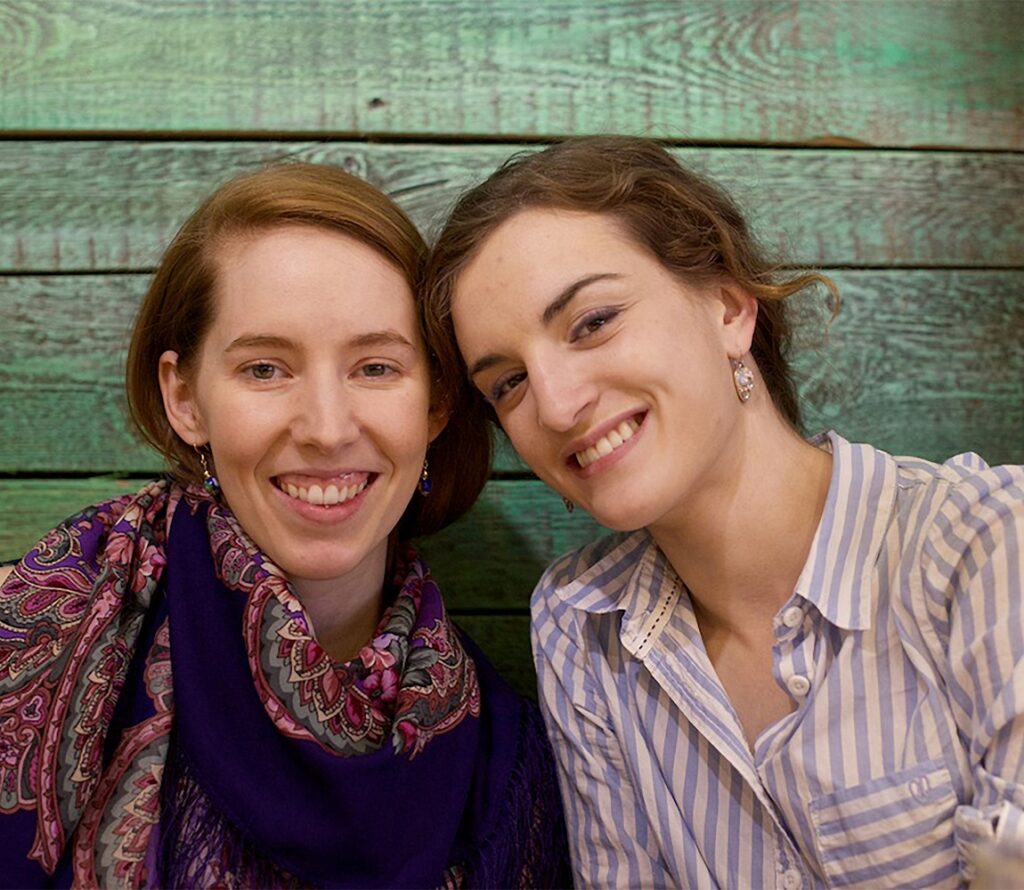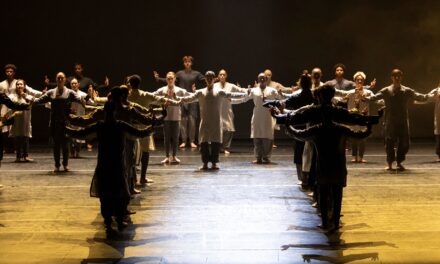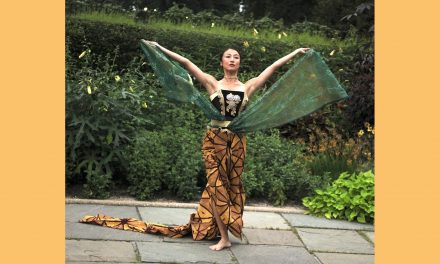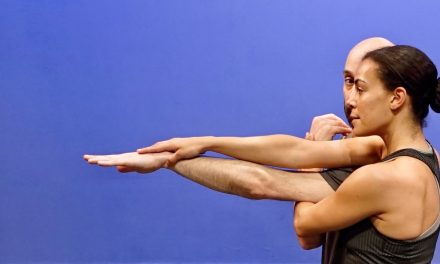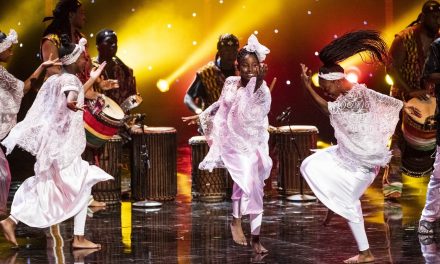Joy Womack has one of the most documented dance careers of the modern era. She is best known as the first American dancer to graduate from the Bolshoi Academy with a Red Diploma (the equivalent of an honours degree) and the first to sign a soloist contract with the company. She went on to dance as a principal dancer with the Kremlin Ballet in Russia, the Universal Ballet in South Korea, and, for a short time, in the corps of Boston Ballet. She is currently a freelance artist living in Paris. I spoke with her about her new memoir, Behind the Red Velvet Curtain: An American Ballerina in Russia, which was written over twelve years with journalist Elizabeth Shockman. We also discussed her current professional work, some of the darker aspects of a ballet career, and the joy she receives by giving back through her foundation and outreach. This article draws on our conversation, readings, and emails. Joy is a brilliant, complicated artist. Even with the plethora of online and print material available about her, there is more to discover with each conversation and new video. Rather than a traditional review, this article will explore three areas I found particularly compelling in her book and throughout our correspondence: her incredible honesty and vulnerability in discussing her eating disorder, mental health, and spirituality, her current projects, and her work as a master teacher and advocate. I encourage you to read her book, watch the movies, and explore her social media platforms to learn more! Please note that some quotes have been edited for clarity.
Ms. Womack’s ballet career began in Los Angeles. Ms. Womack is one of nine children, born into a fundamentalist religious household, though her mother is Jewish and a Harvard-educated (once again practicing) doctor. She started ballet, possibly to keep her out of her mother’s hair, first at a local rec center at age three, then seriously at Westside Ballet at age four. Those early years were spent studying the Balanchine style. She stayed at the school until the family moved to Texas when she was twelve. Her mother came upon a Vaganova-trained teacher, and her path to the Bolshoi began. She spent a year in Texas before joining the Kirov Academy (now defunct) in Washington, DC. At 15, she was invited into the Bolshoi Academy and started to make history. Since then, every move she has made has been documented on film and in print, so my first question was, of course, why a book and why now?
I wanted to tell my story without having to edit myself. I wanted to be as real as possible, and then also to reflect, because by the time we started working on the book, the Ukraine war had broken out. So I was trying to kind of reflect on my life and the path that I’ve gone, and just my journey. And, yeah, I just wanted to share something that was as unfiltered as I could be.
I just wanted to have an honest story out there and give people an unfiltered backstage look at what it takes to be a dancer and give them a personal insight into the lessons that I learned.
There are paths not taken in the book; Ms. Womack takes care to only tell her story, so though there are references to early childhood assault and abuse, the details are not revealed. Where she is unfailingly open and honest is with her relationship to herself, her body, and the battle that raged, until very recently, to maintain the aesthetic that she thought ballet required of her. She speaks unflinchingly of her years-long battle with bulimia and the hospitalizations and injuries that were caused by it. Many people with bulimia have additional shame and will not name it. She addresses it on numerous occasions but never places blame on anyone else for her choices, even when they exceeded her control.
There are certain things, too, that I don’t really feel are my story to tell, even though the abuse happened to me. I feel like it wouldn’t be fair to the other person who was involved to put that out there for the whole world. After doing a lot of work in therapy and reflection, it’s like, there are so many statistics and studies that show that early childhood abuse leads to either addiction or [eating disorders], there’s such a correlation there. I think that is one of the big things that led to this “English-like” idea that I am not a victim. I can have control, I can be empowered, I can, you know, take care of myself. I wanted my story to be real and to share it, because I think it’s not about sugar coating it. There’s enough out there that’s like a sugar cookie: beautifully packaged with a happy ending, and it’s like, no! Life is messy. Life is dealing with really, really hard things. There is also strength, and one finds resilience in that.
Talk of resilience leads to a discussion of spirituality. Ms. Womack explores spirituality and religion throughout the book. She grapples with her unusual background and lineage and credits her spirituality with helping her persevere through difficult times.
I think it is an interesting mix, right? Growing up Christian but also growing up very Jewish at the same time. The older I get, the more I identify with my Jewish roots. It is something to be proud of. It’s like, wow, I am part of an ethnicity, I’m part of a community, whether you like it or not. I’ve really enjoyed getting to discover that part of myself and hearing more about my mother’s journey. My grandmother, like that whole line, was Jewish. Her father came to the US, and they changed their last name because nobody wanted to be associated with a Jewish person. She was very much a Reform Jew. She didn’t talk about it because it was not very fashionable at that time. But then there’s my mother, who went fully into Orthodox Judaism. Her first husband was an Orthodox Jew. But then she married my dad and converted to Christianity. But still, we celebrated the holidays. My sister is Jewish now. There is a connection between both worlds. In evangelical circles, there are the Messianic Jews. There is a glorification of the Jewish heritage. My own journey with religion, with faith, is something deeply personal, and I’m still on that journey.
There are beautiful passages in the book detailing Ms. Womack’s religious journey in Russia and the support of the communities that she found there. Like everything else in her journey so far, it has not followed a dictated path.
I am very grateful for the values my parents instilled in me, but I think that my relationship with God is something very personal and something that both my parents could not have given me. It’s something that the relationship was so important in keeping me steady and grounded. I moved to Russia without my parents. They were so checked out. I love them, but they were dealing with raising eight other kids, and I was kind of on my own, do you know what I mean?
Ms. Womack clearly has a complicated relationship with her parents. Some of the early passages in the book that detail her first marriage and the tensions between them are difficult to read about. They also emphasize the solitude that she felt.
There wasn’t really a plan for if things don’t work out. That was not really spoken about. Whether or not that was my parents’ intention or not, I did feel that I had one shot and I had to figure things out for myself. I think that’s why I made some decisions. [an early marriage for citizenship, among others] I think in hindsight, now, knowing my parents, I think that there would have been more grace, more “we could have helped you.” But I felt growing up, in my teenage and early teenage years, and then early adulthood, that I was alone and that I didn’t have anybody to help me. I think that faith becomes real when you have to rely on it. My life is a testimony, it is like a sequence of miracles; There are so many things that I can’t explain, so many invitations, moments of forgiveness, and moments of reconciliation.
Reconciliation is a recurring theme in the book, with people, with places, with theaters, and most importantly with herself. The moment, which occurs late in the narrative, coincides with a short-term contract with the Paris Opera Ballet, is stunning.
I went into the bathroom of our Paris apartment, to the cold porcelain toilet to purge and punish myself in preparation.
But something stopped me there. It was a thought that had been poking at my brain for years.
What if this is the thing that’s holding me back?
I felt a grain of curiosity rise at the back of my head.
What if I don’t throw up? What if I let this go? What if I give myself the care and nourishment I need to perform?
Behind the Red Velvet Curtain, p.282
Ms. Womack does not pretend that was the end, but it did signal a turning point. It is a powerful epilogue in the book, and a powerful starting place in real life.
Ms. Womack’s current freelance life is full and varied. She is currently appearing as part of the Paris Company in Amazon Prime’s new show Étoile. I asked her two questions about the experience, as film work is so vastly different from ballet company life. The first was about the challenges of working on an American television show in Paris:It was a really big learning experience — and honestly, such a joy to be back on set after my work dancing, doubling, and choreographing Joika.[The American] This time, stepping in front of the camera brought a new and special learning curve. With TV, you can pour hours of work into a moment that lasts maybe 10 seconds on screen — but I tried to embrace the process and find the reward in the time spent with my colleagues. I gained a wonderful group of friends and artists through this experience, and it really opened my eyes to the possibilities of working in this industry.
I also believe shows and movies are essential for giving wider access to our artform. They help popularize ballet for people who might not otherwise discover it. I hope this show encourages more people to experience live performances for themselves and creates new waves of support for dance companies that are struggling.
Then, how was it to work with powerful women in leadership positions on the show?
I absolutely loved working with Amy [Amy Sherman-Palladino, writer, producer, director] — she’s a dancer herself and knows exactly what she wants to see on screen. I was inspired by how her dance background influences her leadership style and her ability to bring out the best in everyone around her. She has a beautiful heart, and we shared so many laughs and fun moments together.
As for Marguerite [Marguerite Derricks, choreographer, producer], working with her helped me grow both as a dancer and as a person. I have immense respect for what she’s accomplished and her vision for movement on screen. I learned a lot just from observing how she approached rehearsals versus shoot days. It was especially meaningful to see how engaged she was — even watching us take class every day. You could feel her passion, and that kind of presence is the true mark of a leader.
In addition to Étoile, Ms. Womack is extremely busy as a freelance artist. She still dances as a guest artist for companies all over the world, but is building her own company, The Joy Womack Ballet Company and Academy. The company aims to foster both artistry and philanthropy:
The Joy Womack Ballet Company is a dynamic and diverse group of international dance stars united by a common mission: to bring the art of dance to the world stage while supporting the aspirations of young talents through the Joy Womack Ballet Foundation.
The company just gave a gala performance on March 20 in Paris with an all-star roster of dancers. She gives back, as an international judge for ballet competitions, notably Prix de Lausanne, and coach. The academy aims to train both students and teachers in the Vaganova technique with a holistic and healthy approach.
Finally, Ms. Womack is intimately involved with the Leap of Dance Academy in Nigeria.
Leap of Dance Academy is a ballet school in Lagos, Nigeria, founded by Daniel Ajala Owoseni in 2017. The academy provides free ballet training to children who are passionate about dance but lack access to formal training. JWBF supports the school by providing performances, costumes, dancewear, and gifts of the JWBA curriculum. They’re also hoping to organize a teacher training intensive this August with Daniel, the school’s director, aimed at aspiring ballet teachers across West Africa, and are currently fundraising to make this initiative possible.
It’s truly inspiring to hear how Daniel’s work continues to flourish and how many talented young artists are emerging from his program. I’m thrilled to hear about Precious being accepted to the Paris Opera Ballet’s summer intensive — what a monumental achievement, and a proud moment for Nigeria and the entire Leap of Dance community. I’ll be keeping a close eye on the girls heading to Italy this summer too — I’m sure they’ll shine!
“Watching these young dancers rise from such humble beginnings with so much discipline, grace, and heart is a reminder of the transformative power of art. Daniel’s vision and devotion are creating ripples that will be felt for generations.”
Ms. Womack is a complicated figure in the dance world. There is enough information about her to fill numerous films, books, articles, and blogs, yet I still feel, even after reading her book and talking, watching the films, and numerous interviews and vlogs, that there is more to learn. Her journey, though already astounding, has just begun.
For more information about Joy Womack, please visit her website.
To purchase Behind the Red Velvet Curtain: An American Ballerina in Russia by Joy Womack, please click HERE.
Written by Nancy Dobbs Owen for LA Dance Chronicle.
Featured image: Joy Womack performing at Gala in Paris, France – Photo by Masha Kulch.
